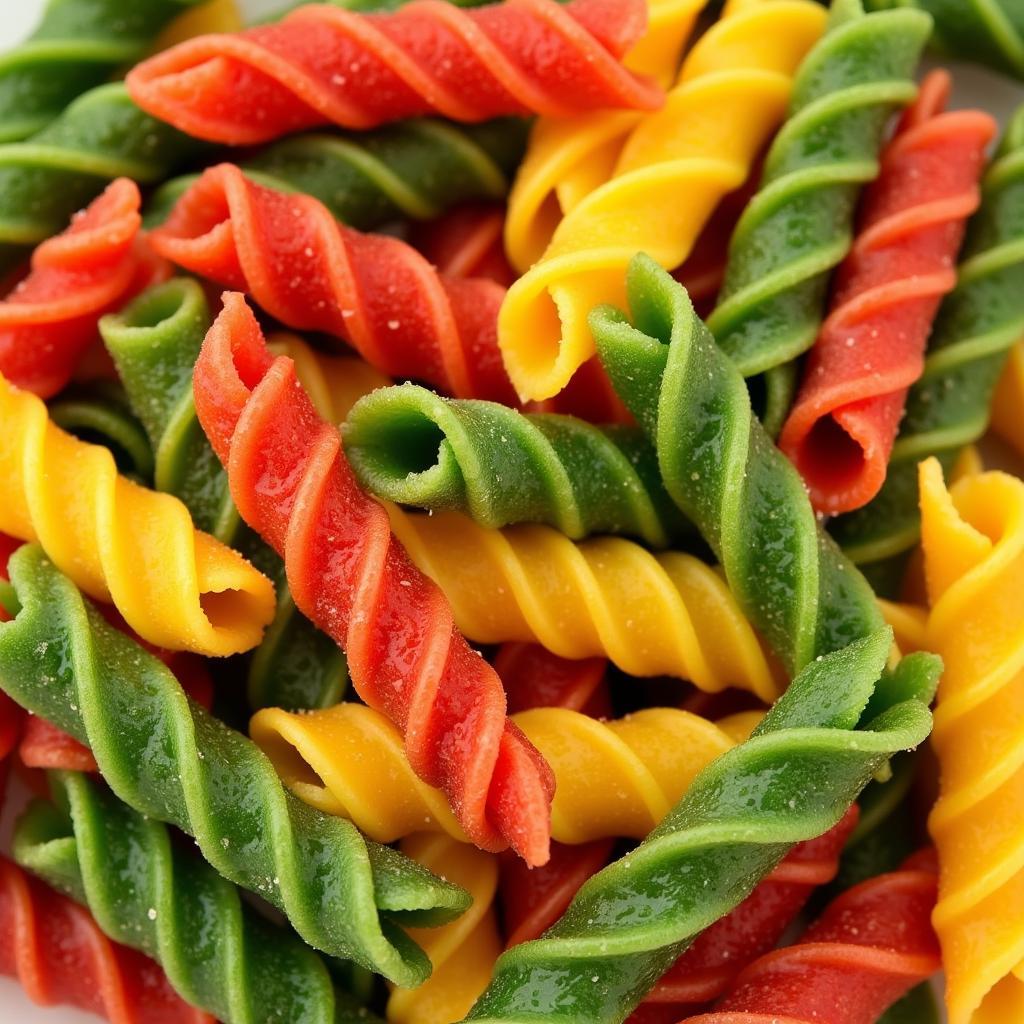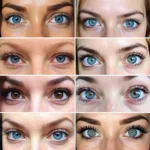Is tri-color pasta healthy? It’s a question many health-conscious pasta lovers ask. While the vibrant colors suggest added nutrients and health benefits, the truth is a little more nuanced. This article will delve into the nutritional profile of tri-color pasta, compare it to regular pasta, and explore whether it’s a truly healthier alternative.
Decoding the Colors of Tri-Color Pasta
Tri-color pasta gets its appealing hues from natural ingredients added during production. Typically, these include spinach for green, tomatoes for red, and the natural semolina or durum wheat for yellow. These additions offer a visual appeal and a subtle flavor difference. But does this translate to significant nutritional advantages?
Let’s examine each color:
-
Green (Spinach): Spinach is a nutritional powerhouse, packed with vitamins, minerals, and antioxidants. Adding spinach to pasta boosts its vitamin A, vitamin K, and folate content.
-
Red (Tomato): Tomatoes contribute lycopene, a potent antioxidant known for its potential health benefits, including reducing the risk of certain cancers and heart disease. However, the amount of tomato in tri-color pasta may not provide a substantial lycopene boost.
-
Yellow (Semolina/Durum Wheat): This forms the base of most pasta, including tri-color varieties. It provides carbohydrates for energy and some protein.
 Tri-Color Pasta Ingredients: Spinach, Tomato, and Durum Wheat
Tri-Color Pasta Ingredients: Spinach, Tomato, and Durum Wheat
Is Tri-Color Pasta More Nutritious Than Regular Pasta?
While the added vegetables offer some nutritional perks, the overall nutritional difference between tri-color pasta and regular pasta isn’t drastic. The quantities of spinach and tomato incorporated are often relatively small, meaning the added vitamins and antioxidants are present, but not in significantly higher amounts compared to a serving of the vegetables themselves.
Tri-color pasta can be a fun and visually appealing way to introduce a bit more variety into your diet. However, it shouldn’t be mistaken as a health food solely based on its colors.
“Tri-color pasta can be a great way to add visual interest to a meal,” explains registered dietitian, Annabelle Carter, RDN. “While the nutritional boost is modest, it’s a step in the right direction, especially for picky eaters who might be more inclined to try colorful pasta.”
Tri-Color Pasta: Calories, Carbs, and Fiber
The calorie and carbohydrate content of tri-color pasta are comparable to regular pasta. Fiber content might be slightly higher due to the added vegetables, but the difference is often negligible.
How to Make Tri-Color Pasta Part of a Healthy Diet
Tri-color pasta, like regular pasta, should be part of a balanced diet. Focus on portion control and pair it with nutritious additions to maximize its health benefits.
- Add protein: Combine tri-color pasta with lean protein sources like chicken, fish, beans, or lentils.
- Load up on vegetables: Don’t rely solely on the small amount of vegetables in the pasta itself. Add a generous serving of your favorite vegetables to your pasta dish.
- Choose healthy sauces: Opt for tomato-based sauces, pesto, or light olive oil-based dressings instead of heavy cream sauces.
- Whole wheat tri-color pasta: Look for whole wheat versions for a higher fiber content, which can help with digestion and promote satiety. If you’re curious about coloring your own noodles, you might want to read about how do you color noodles. You can also explore what color is ripe spaghetti squash for more colorful meal options.
Conclusion: Enjoying Tri-Color Pasta Responsibly
Is tri-color pasta healthy? In moderation and as part of a balanced diet, tri-color pasta can be a healthy and enjoyable food. While the added vegetables offer a slight nutritional advantage, don’t expect a dramatic health transformation. Focus on building a healthy meal around your pasta by incorporating plenty of vegetables, lean protein, and healthy fats. Looking for the perfect night light for your toddler? Check out our guide on what color night light is best for toddlers.
FAQ
- Is tri-color pasta gluten-free? No, most tri-color pasta is made from wheat flour and contains gluten.
- Can I make my own tri-color pasta? Yes, you can find recipes online to make tri-color pasta using natural ingredients.
- Is tri-color pasta more expensive than regular pasta? Typically, yes, due to the added ingredients and processing.
- Does tri-color pasta taste different from regular pasta? The added vegetables give tri-color pasta a slightly different, often more subtle flavor.
- Is tri-color pasta suitable for vegetarians? Yes, most tri-color pasta is suitable for vegetarians.
“Remember, a healthy diet is about balance and variety,” adds Dr. Michael Chen, a leading nutrition specialist. “Tri-color pasta can be a fun and tasty part of that balance.”
Need more help? Contact us! Phone: 0373298888, Email: [email protected] Or visit us at 86 Cau Giay, Hanoi. We have a 24/7 customer service team.

